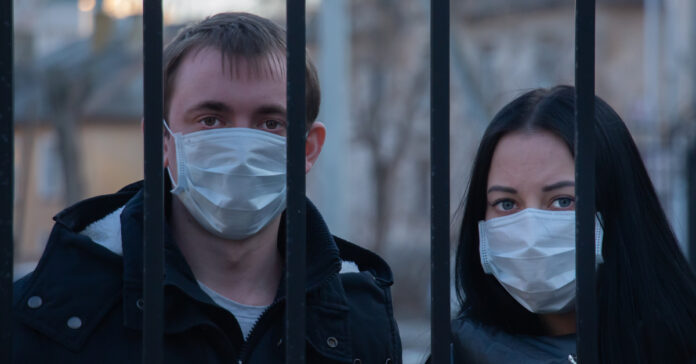An increase of coronavirus cases in France, Germany and Spain seems to be demonstrating that even the most careful, socially-distanced countries that have successfully stamped out COVID-19 are going to be facing a second wave. It makes talk of a terrible COVID-19 winter Seem even more likely.
France’s 2,524 new cases don’t seem like much compared to the 54,132 cases reported in the U.S., but it’s the most they’ve had since ending their lockdown in May. A harbinger of trouble is that the number of positive tests has increased from 1.6 percent a week ago to 2.2 percent.
The slow spread of COVID-19 in Western Europe does not bode well for cities like New York, where the virus has been largely under control. New York reported 700 new positive cases yesterday, but they tested 87,776 people for a positive test rate of 0.8 percent, half of France’s. But the implication is that there could still be a slow, inexorable uptick in New York’s future.
Spread Slows Across U.S. While Deaths Rise
The U.S. has more than 5.2 million reported cases, but the rate of infection is slowing across most states. Illinois and Hawaii are the only states where The New York Times shows cases are increases. (They are joined by Puerto Rici, the U.S. Virgin Islands, and Guam.) The paper reports rates of infection are holding steady in 25 states plus Washington D.C. and decreasing in 23.
Among former hot spots, Texas is rated as steady but trending downwards, while Florida, Arizona and both North and South Carolina are seeing steady decreases. Arizona’s curve has dropped sharply, from a peak of 4,797 in early July to 1,024 in the past 24 hours.
While cases are slowing deaths hit a peak of 1,468, the highest since May 27. But deaths should begin to drop off as they lag positive test results by several weeks.
Globally, there have been more than 750,000 deaths and 20.666 million cases.
Another Winter of Discontent
People expected that the warm summer weather would help curtail COVID-19 infections and that proved to be an invalid assumption. Now the fear is that the combination of COVID-19 and the regular flu season will make things worse this winter. No one knows if this prediction is accurate, but it has been all over the news.
A big question mark is holiday travel. Will families travel for Thanksgiving and Christmas? Will these family gatherings contribute to the spread the virus? What will happen when those college students who actually live on campus and participate in in-person classes, return home for the holidays. How many will be asymptomatic carriers that spread the virus to their parents and grandparents?
People that are meeting friends in parks or grilling out with neighbors may find it difficult to do when temperatures drop. Restaurants that offer outdoor seating will probably see those numbers decline with the ambient temperature.
Add to this the continued economic problems and the possible political squabbling and continued social unrest, and as we mentioned in our last post, there’s good reason to worry beyond COVID-19.
A Window of Opportunity
This is a window of opportunity for people to prep. Stores shelves are re-stocked, and you can buy toilet paper and canned soup again. Meat packing plants are back in full service. Take a look at March through May of this year and take steps to be prepared for November through May. Take steps to protect yourself and your family before it is too late.







